
* Other US smart munitions introduced into the US arsenal up to the end of the 20th century have included the AGM-88 HARM anti-radar missile, the AGM-142 Raptor stand-off missile, the AGM-154 JSOW glide bomb, as well as with the JDAM, SDB, and MOP glide bombs.
* During the Vietnam War, the US military employed two anti-radar missiles (ARM): the lightweight Shrike, a variant of the Sparrow air-to-air missile (AAM), mentioned earlier; and the heavyweight "Standard ARM", based on the US Navy Standard surface-to air missile (SAM). STARM was adopted because the Shrike was too light, but it left something to be desired, since it a big launch aircraft and was complicated to operate and maintain.
Something was needed that was faster, had longer range, and more hitting power than the Shrike, but wasn't as big and complicated as the STARM, and made use of improved anti-radar seeker technology. The answer was the "AGM-88 High Speed Anti-Radar Missile (HARM)". The US Navy began studies that led to HARM in 1969, awarding a development contract for the weapon to Texas Instruments in 1974. First test flights of the HARM were in 1976, followed by low-rate initial production in 1981, with operational introduction in 1983.
The last new-build HARM was produced in 1994 after a production run of about 20,000 missiles, but those in service are being kept up-to-date through upgrades. The HARM went into in service with the US Navy and Air Force, as well as with the air forces of Australia, Germany, Greece, Italy, Spain, South Korea, and Turkey.

First combat use of HARM was in 1986, when US Navy Vought A-7 strike fighters used four HARMs to attack Libyan air-defense radars during a series of squabbles between the US and Libya. About 2,000 HARMs were expended on Iraqi targets during the Gulf War; they were extremely successful in keeping Saddam Hussein's air defense systems off line, and would be used against the Iraqis again. Over 1,000 HARMs were expended by Allied forces during the Kosovo air campaign in 1999. They do not seem to have been used in any quantity during the Afghanistan campaign in 2001:2002, since Afghan air defenses were in a dysfunctional state after years of civil war, but they were used during the US invasion of Iraq in 2003. Somewhat surprisingly, HARMs were employed to great effect after the Russian invasion of Ukraine in 2022, with Ukrainian MiG-29 fighters being adapted to carry and launch them.
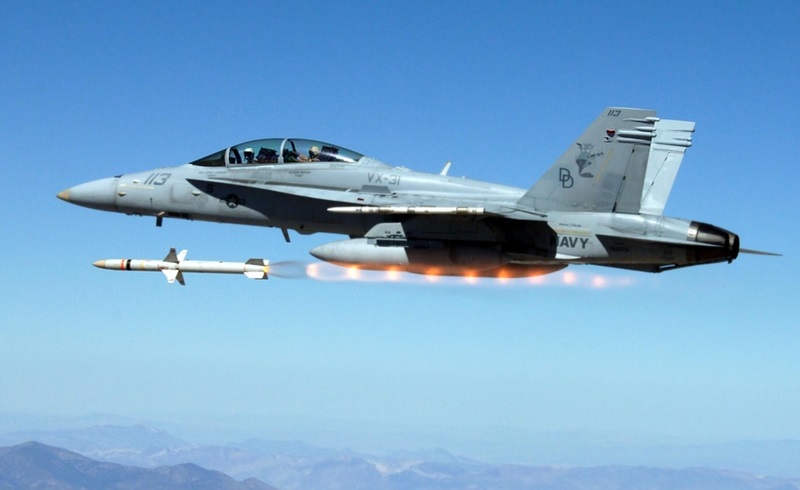
* As it emerged, HARM was something like a scaled-up Shrike, with about twice the weight of the earlier missile, though HARM could be easily distinguished from a Shrike by the square tip extensions on its wings. Like the Shrike, the wings pivoted while the tail fins were fixed. The HARM was fitted with a blast-fragmentation warhead, featuring both a laser-activated proximity fuze and an impact fuze. The warhead contained 20.5 kilograms (45 pounds) of explosive and 25,000 steel cubes. This was a fair amount of hitting power, comparable to a 155-millimeter artillery shell.
The HARM was propelled by a low-smoke solid rocket motor. Speed was described as "over Mach 2", which would have made HARM somewhat faster than a Shrike, but its name and other evidence suggested that it was well speedier than that. HARM was designed to be fast enough to hit and blind air-defense sites after they had fired SAMs at the launch aircraft, making the missiles go ballistic and miss -- suggesting it was substantially faster than most SAMs.
___________________________________________________________________
AGM-88 HARM:
___________________________________________________________________
wingspan:
1.18 meters (3 feet 8 inches)
length:
4.17 meters (13 feet 8 inches)
diameter:
25.4 centimeters (10 inches)
total weight:
361 kilograms (796 pounds)
warhead weight:
65 kilograms (143 pounds)
speed:
Mach 2+
range at altitude:
105 kilometers (65 MI / 57 NMI)
___________________________________________________________________
HARM had a 360-degree engagement capability, allowing the launch aircraft to fire at targets to its rear -- though of course that would impose a range penalty, since the missile had to expend fuel to turn around, while the launch aircraft's speed worked against the missile.
HARM seekers had broadband coverage, allowing them to target a range of different radars; a Shrike, in contrast, had to be fitted with a specific seeker to target a specific radar. The missile's seeker was linked to radar-targeting systems on the launch aircraft that cue the weapon to attack a specific target. HARM has been deployed on a wide range of aircraft, particular the USAF F-4G Wild Weasel Phantoms, which have been retired, and Luftwaffe and Italian Tornado ECR strike aircraft. The primary HARM platform for the USAF is currently the F-16 fitted with the "ASQ-213 HARM Targeting System (HTS)". The US Navy carried the HARM on the Grumman EA-6B Prowler, and then on the EF-18G Growler after the retirement of the Prowler.
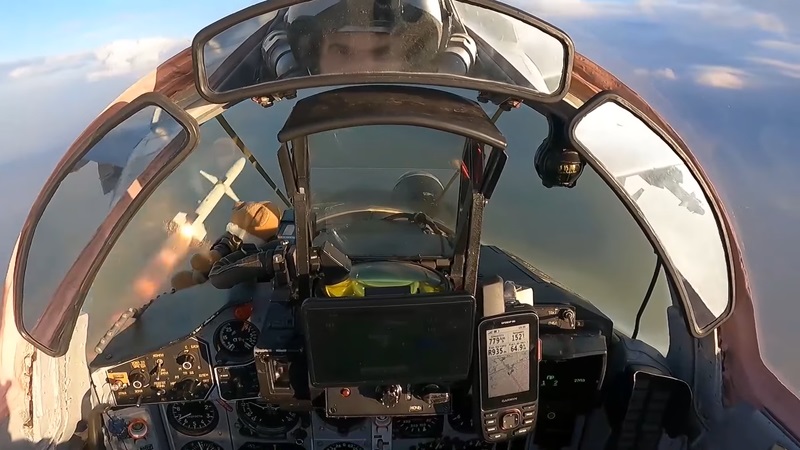
The equipment fit of the launch platform dictated to a large extent the options for using the HARM. In US Navy service, the missile could be programmed in one of three operating modes:
When carried on a USAF F-4G Wild Weasel, the HARM could be launched in a long-range "Pre-Emptive (PE)" attack on a remote target whose location had been inferred by the Weasel's electronics systems, or in a quick-reaction "Direct Attack (DA)" in response to illumination by an adversary radar. The F-16 with HTS had three HARM attack modes:
* The initial AGM-88A variant was originally produced with a "Block I" seeker, which was no great improvement on the Shrike seeker; it had to be factory-programmed to target specific radars, requiring that a selection of seekers be stockpiled. The AGM-88A was updated a few years later to a "Block II" seeker, which could be reprogrammed in the field, and also had the capability to support updates through software.
First deliveries of the "AGM-88B" HARM took place in 1987. The AGM-88B originally used a Block II seeker, but in 1990 it was updated with "Block III" software to deal with new types of threats. At the end of the decade US Navy HARMs received a "Block IIIA" software update, providing a degree of improved counter-countermeasures capability, including a "home-on-jam (HOJ)" feature to attack jamming transmitters, and some ability to continue on track even when a target radar shuts down.
A third-generation HARM, the "AGM-88C", was introduced after the Gulf War. This weapon incorporated an improved seeker to cope with modern radars that operate in a variety of modes and have features such as frequency hopping. The HARM's warhead was also upgraded for better fragmentation effect, incorporating 12,845 tungsten-alloy cubes. The new warhead was said to have double the destructive effect of the old.
The initial AGM-88C had "Block IV" software, but in early 2000 the Navy began to update their AGM-88Cs to "Block V" software, providing the same benefits of the AGM-88B's Block III software, plus additional features permitted by the AGM-88C's improved hardware. No foreign users obtained the AGM-88C, but they could update their AGM-88Bs to Block IIIA software.
* Sources hint at the existence of an "AGM-88D" HARM variant, being an upgrade to Block VI software, but there's little evidence that this variant designation was actually used. That meant the next HARM variant was the "AGM-88E Advanced Anti-Radiation Guided Missile (AARGM)". Its primary feature was a "dual mode" seeker with both radar-homing and millimeter-wave imaging radar capability using a shared "conformal antenna", along with a GPS-INS navigation capability.
The AARGM seeker's radar homing element covered a wider band of frequencies and had a wider field of view than the previous HARM seeker. It could also identify an emitter autonomously after launch, so the operator did not need to have a lock before firing. If the emitter shut down, the millimeter-wave radar would scan and identify targets, then continue the attack. Whether the radar continued to emit or not, the millimeter-wave radar would attempt to identify the air-defense site's command van, and attack it instead of the radar antenna. The missile's GPS-INS system could be preprogrammed to direct the missile to the target area. The missile also included a datalink to provide guidance updates and report back for damage assessment. Thanks to its dual-mode seeker and advanced navigation capabilities, the AGM-88E could be used to attack non-emitting targets, even if they were on the move.
AARGM development was begun by the Science Applied Technology (SAT) company of San Diego, California, though the company was bought out by Alliant Techsystems in late 2002 after running into political problems. The development program was initiated in 1990, with first firing of a HARM with the new seeker in the spring of 2000 and introduction to service in 2010. The US Navy not only obtained new-production weapons, but updated older HARMs to AGM-88E spec as well. The Italian Air Force was also involved in the program, and obtained the AARGM.
* The US Air Force was not interested in AARGM, focusing on a less ambitious upgrade designated the "HARM Control Section Modification (HCSM)". It apparently began life in 1999 as the "International HARM Upgrade Program (IHUP)", a joint effort by the US Navy, Germany, and Italy to develop a "Precision Navigation Unit (PNU)" with a GPS-INS guidance system for the missile. By 2003, the effort had produced a prototype system, but the Navy decided to focus on AARGM instead and gave up on IHUP. The USAF picked up the program, which became known as the "HARM Defense Attack Module (HDAM)" in that phase of the program.
HCSM consisted of a GPS-INS guidance system upgrade with a fiber-optic gyro INS, coupled to a sophisticated guidance processor. An HCSM HARM could be programmed to restrict targeting to a predefined zone; if the missile lost emitter lock, it would continue on course, and also try to re-acquire lock if an emitter turned back on. The HCSM HARM could also be used to attack non-emitting soft targets. Raytheon was awarded the contract for HSCM, beginning full-rate production of the "AGM-88F" variant in 2013.
* Roughly in parallel, BGT did work on a HARM follow-on with rocket-ramjet propulsion designated "Antiradiation Missile with Intelligent Guidance & Extended Range (ARMIGER)", but the program ran out of money and went into limbo. The USAF had also been talking with the US Navy concerning a "Joint Dual-Role Air Dominance Missile (JDRADM)" or simply "Next Generation Missile (NGM)", which would be capable of operating as an air-to-air missile or anti-radar missile, allowing an aircraft to hit back at both airborne and ground threats. Such a "dual mode" weapon would also simplify logistics. The effort was shelved in 2012 due to lack of money.
The NGM exercise was wrapped up in the Air Force's need to figure out how to cram more firepower into the F-35 Joint Strike Fighter's internal weapons bays. The F-35 could only carry four AIM-120 AMRAAM missiles internally and couldn't carry HARM internally at all. Such munitions could be carried externally, but would then compromise the aircraft's "stealth" capabilities.
Interest in a longer-range HARM and stealth carriage did in fact lead to the "AGM-88G AARGM Extended-Range (ER)", a largely redesigned solid-fuel missile with improved performance and a new airframe, retaining the control tailfins but deleting the wings, so it could be carried internally by "stealthy" aircraft. Apparently it retained the AARGM warhead and seeker, with updates. It was introduced to service in 2023.
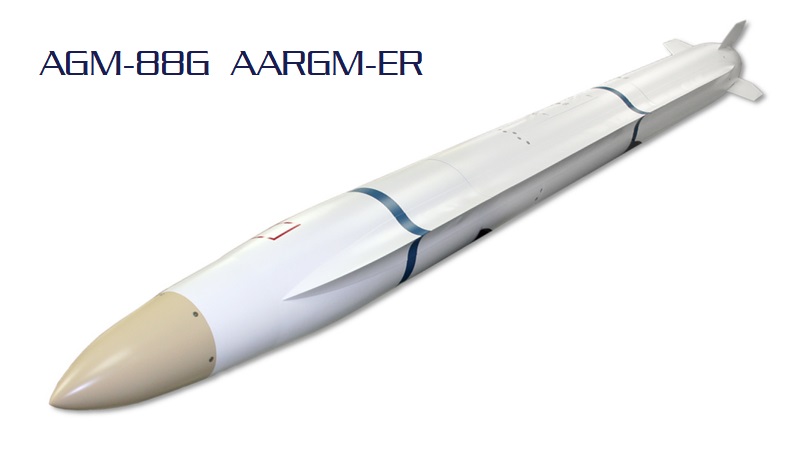
The AARGM-ER had a length of 1.13 meters (13 feet 8 inches), a wingspan of 1.13 meters (3 feet 8 inches), and a diameter of 25 centimeters (10 inches). Performance figures were not released. It could be carried internally on the F-35A and F-35C, but only externally on the F-35B, which has shorter weapons bays.
The AGM-88G had a modular payload section and has otherwise been designed with growth potential in mind. Manufacturer Northrop Grumman has experimented with ground launch of the AARGM-ER, using a cluster box launcher. The USAF plans to acquire a variant of the AARGM-ER named the "Stand-In Attack Weapon (SIAW)" -- same airframe, but a different seeker and warhead. It will be designed to perform quick-response attacks on distant mobile targets.
BACK_TO_TOP* In the 1980s, the USAF acquired "AGM-142A Raptor" -- a heavy long-range conventional stand-off weapon with a big warhead. The AGM-142A is actually a modification of an Israeli-designed weapon, the Rafael "Popeye", which was introduced late in the decade and carried on Israeli McDonnell Douglas F-4E Phantom strike fighters.
In 1988, the USAF awarded a contract to Rafael and Boeing to obtain a quantity of Popeye missiles and integrate them with the Boeing B-52G. The missile was originally designated "Have Nap" in USAF service, but was later given the more formal designation AGM-142A Raptor. The AGM-142A was also eventually integrated with other attack aircraft, such as the F-16 Falcon.
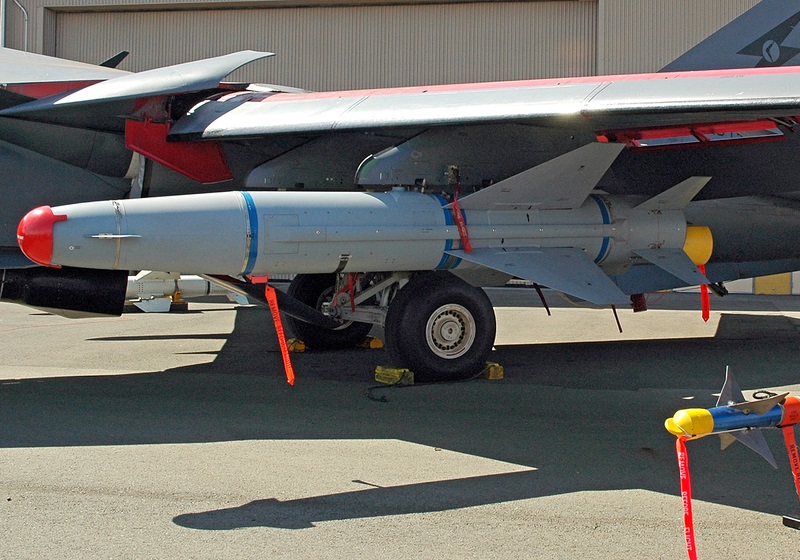
The AGM-142A had a blunt cylindrical fuselage, with four stubby cruciform wings and a hydraulically-operated cruciform tailfins for control. The weapon could be fitted with either a blast-fragmentation or hard-cased penetrating warhead. The AGM-142A was propelled by a constant-thrust solid-fuel rocket. Guidance was either through a TV or imaging-infrared seeker, with an INS for midcourse guidance up to the target area. The television seeker had a telephoto lens to provide a zoom capability. The launch aircraft carried a datalink pod to receive images from the missile.
___________________________________________________________________
AGM-142A RAPTOR:
___________________________________________________________________
wingspan:
1.72 meters (5 feet 8 inches)
length:
4.57 meters (15 feet)
diameter:
53.3 centimeters (1 foot 9 inches)
total weight:
1,360 kilograms (3,000 pounds)
warhead weight:
364 kilograms (800 pounds)
speed:
supersonic
range at altitude:
80 kilometers (50 MI / 43 NMI)
___________________________________________________________________
All initial AGM-142As were supplied by Rafael, with minor modifications from the original Popeye configuration for USAF use. The missiles were later built under license by Lockheed Martin. Officially, the AGM-142A was not used in the Gulf War, since its Israeli origins would have offended America's Arab allies. There were still rumors, strongly denied by the authorities, that a few operational test firings were conducted secretly during the conflict. The AGM-142A may have been upgraded with GPS capability and an automatic target recognition system.
Rafael introduced a smaller version of the Popeye for smaller aircraft, this variant being known as the "Popeye2", or the "AGM-142B Have Lite". It was shorter, 4 meters (13 feet 1 inch) long, and weighed 1,115 kilograms (2,460 pounds). As range has been cited in some sources as the same as that of the AGM-142A, it appears that it carried a smaller warhead. The Popeye2 was introduced into Israeli service in 1995. It was exported to Turkey and Korea, but does not appear to have been adopted by the USA. The AGM-142 was replaced in US service from 2009 by the AGM-158 Joint Air To Surface Missile (JASSM), though it may linger elsewhere.
* The AGM-142 was later complemented in service by a glide bomb, the US Navy and Air Force "AGM-154 Joint Stand Off Weapon (JSOW)", with many having been put into service, and some used in combat. The JSOW project was initiated in 1986 under the initial name of "Advanced Interdiction Weapon System (AIWS)" -- the goals being a lightweight, low-cost, fire-&-forget weapon with medium range and the capability to carry different types of warloads. A development contract was awarded to Texas Instruments in 1992. Texas Instruments was later acquired by Raytheon. Initial tests of JSOW began in 1994.

JSOW, as introduced, was an unpowered glide bomb, with pop-out switchblade wings and a GPS-INS navigation system. The weapon was smart enough to fly a pre-planned path to its target, making turns and curving behind mountains. If the proper preplanned launch point could not be reached, a pilot could release it and, as long as the target was within a pie-slice wedge on the cockpit display, let the weapon determine its own flight plan. JSOW was light enough to be carried by smaller attack aircraft such as the F/A-18, the F-16, or AV-8B Harrier.
___________________________________________________________________
AGM-154A JSOW:
___________________________________________________________________
wingspan:
2.7 meters (8 feet 11 inches)
length:
4 meters (13 feet)
total weight:
475 kilograms (1,050 pounds)
speed:
subsonic glide weapon
range at altitude:
75 kilometers (47 MI / 40 NMI)
___________________________________________________________________
The first version of JSOW to be developed was the "AGM-154A" or "JSOW-A", which entered full-scale production in 1999. The AGM-154A carried 145 BLU-97A/B Combined Effects Munitions (CEM) for use on "soft" targets.
The BLU-97A/B was a can-shaped submunition with a weight of 1.54 kilograms (3.4 pounds), built around a hollow charge that could penetrate up to about 18 centimeters (7.1 inches) of armor. Once dispensed, the CEM popped out a number of small "spider" tail tabs to ensure that it fell nose-down, and then deployed a ballute -- balloon-parachute -- to retard its fall. It had a scored case that blasts into 300 fragments, as well as an incendiary zirconium ring. When the JSOW-A made its final attack dive on a target, it blew off covers on either side of its boxy fuselage, and a gas-inflated aluminum bladder scattered the CEMs out the sides.
JSOW was introduced to combat in January 1999, during air strikes by US Navy aircraft on Iraqi air-defense sites, and was used in later combat actions. The results of these strikes exceeded expectations, and the US Air Force accelerated its efforts to get JSOW into full service. Some of the strikes demonstrated that JSOW wasn't able to correct for wind drift as well as desired, but Raytheon implemented software fixes to correct the problem. A "Block II" variant, with improved resistance to GPS jamming, was introduced in 2017. A multiple ejector rack was developed to allow carriage of two JSOWs, or other weapons of similar size, on a single stores pylon.
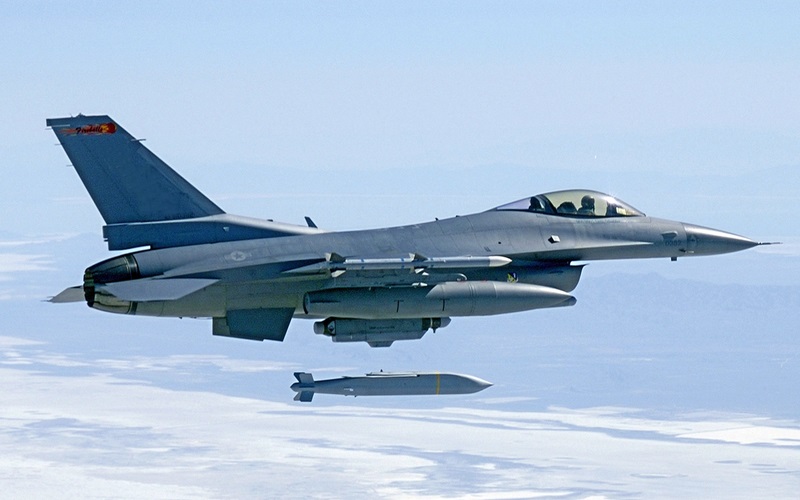
* Both the US Air Force and the Navy considered an anti-armor version of the JSOW, the "AGM-154B" or "JSOW-B", with six BLU-108/B Sensor-Fuzed Weapon submunitions -- discussed later -- but it was canceled. The US Navy acquired a variant with a unitary warhead, the "AGM-154C", or "JSOW-C" featuring a British-developed two-stage "Broach" penetrating warhead. The JSOW-B also featured an imaging infrared seeker and datalink, compatible with the pylon-mounted control pod developed for the Navy Walleye glide bomb, to allow precision strikes on a target. The seeker, inherited from the SLAM-ER cruise missile, was capable of autonomous operation for fire-&-forget attacks.
Low-rate production of the AGM-154C began in the summer of 2003, with operational introduction in 2005 on the F/A-18 Hornet. Improvements have been phased into production, such as a simplified and refined airframe and an updated anti-jam GPS unit. A "JSOW-C1" subvariant with an infrared seeker capable of attacking mobile maritime targets, and a two-way Link-16 datalink was introduced to service in 2016.
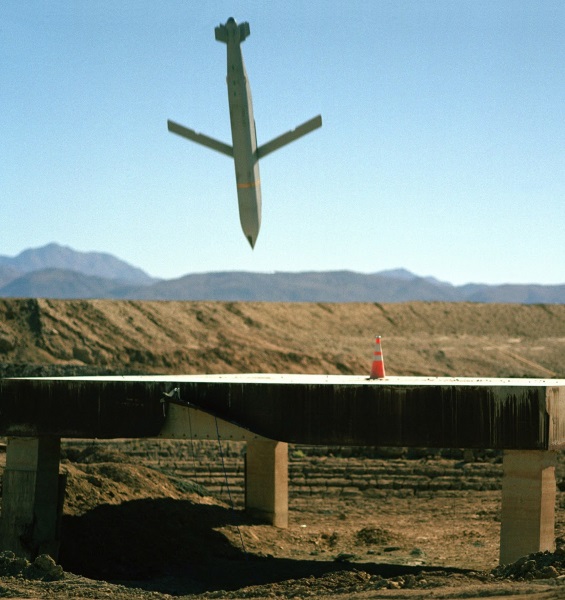
A number of nations have obtained JSOW, including Australia, Canada, Finland, Greece, Netherlands, Poland, Saudi Arabia, Singapore, Turkey, and the UAE. Raytheon has developed a low-cost JSOW with using the Mark 82 lightweight unitary warhead, with this variant designated the "AGM-154A-1" and intended for the export market.
A version of JSOW powered by a Williams International WJ-24 turbojet and named the "Griffin-36" was offered for the British Conventionally Armed Standoff Missile (CASOM) competition in 1996, but was not selected. Raytheon flight-tested an extended range "JSOW-ER" in 2009, fitted with a Hamilton Sundstrand TJ150 small turbojet, with the weapon achieving a range of 480 kilometers (300 miles / 260 NMI); the baseline JSOW design actually included space for an engine. The powered JSOW was sidelined by more interest in the AGM-158 JASSM cruise missile.
BACK_TO_TOP* With the completion of the GPS navsat system in the early 1990s, the US military quickly went on to develop guided weapons that could leverage off of it. After the First Gulf War, the USAF decided to develop a GPS-guided bomb known as the "Joint Direct Attack Munition (JDAM)". In particular, the USAF wanted to have a guided weapon for their new B-2 stealth bomber to make use of the aircraft's impressive attack capabilities. The B-2 featured a precision, all-weather "GPS-Aided Targeting System (GATS)", and a GPS-guided bomb coupled to GATS was exactly what was needed.
However, JDAM wasn't scheduled to become available until almost the end of the century, which left the B-2 without a precision attack capability for several years. As a result, Northrop Grumman proposed a fast-track program to provide a "GPS-Aided Munition (GAM)" until JDAM came along. The result was a kit for the heavyweight Mark 84 bomb. The kit consisted of a tailpiece that contained control electronics, and a "jacket" that was wrapped around the nose of the bomb. The tailkit had moveable fins, along with a guidance system and thermal battery, and was linked to the launch aircraft over an umbilical connection that allowed downloading GPS coordinates. The jacket had strakes mounted on it at an angle to keep the bomb properly oriented as it fell.
The weapon was originally designated "GAM-84", but later redesignated "GBU-36/B". Initial drop tests were conducted in June 1995, leading up to a demonstration in October 1996: three B-2s dropped 16 live GAMs on 16 targets, with the first bomber dropping eight GAMs, and the following two bombers dropping four each. The last bomber performed damage assessment, to show that all 16 targets had been hit and destroyed in a single pass of the three aircraft. GAM could hit a target up to 24 kilometers (15 miles) away when dropped from altitude, and its "circular error probability (CEP)", which is defined as the radius into which a munition can be placed at least half the time, was less than six meters (20 feet).
The Air Force also wanted a GPS-aided munition based on a heavy penetrator bomb for bunker busting, and so developed a GAM kit for the BLU-113/B 2,100-kilogram (4,700-pound) penetrator bomb. The weapon that resulted was originally designated "GAM-113" but later redesignated "GBU-37/B"; the first inert drop of this weapon from a B-2 was in April 1997. It was dropped in combat by B-2s beginning in the fall of 2001, during strikes on terrorist camps in Afghanistan following terrorist attacks on the US.
* As noted, GAM was strictly an interim development -- produced in small quantities at relatively high unit cost, and soon expended. JDAM was the way of the future, designed to provide the same capabilities as GAM at low cost in high volume, for use on several different aircraft.
The JDAM GPS guidance kit provided a tail with a GPS-INS guidance system, along with a set of strakes that were strapped around the bomb midbody to direct the bomb's fall. The guidance system was programmed by an umbilical connection; there has been talk of an infrared link instead, though status of that exercise is unclear.
Kits were developed for the heavyweight Mark 84 general purpose or BLU-109/B penetrator bombs, resulting in a weapon with the designation "GBU-31/B" -- and for the middleweight Mark 83 general purpose bomb, resulting in the "GBU-32/B". Stated CEP for the JDAM was 13 meters (43 feet), though it appears in practice to be a meter or so.

First tests of JDAM were performed in late 1996, with the weapon being qualified on most US attack aircraft. Production began in 1998, with JDAM introduced to combat during the 1999 NATO Kosovo campaign, the B-2 stealth bomber using the weapon to good effect. Kosovo was the first combat use of the B-2. The USAF also employed JDAMs in 2001, during the campaign against Afghanistan, dropping them from B-52s and B-1s. Post-strike imagery demonstrated the remarkable accuracy of the JDAM, with targeted runways neatly cratered out at all the intersections.
In addition, JDAMs allowed the heavy bombers to fly all-weather close support missions, a role which their original designers could not have imagined. The bombers took off with a load of JDAMs without having specific targets and orbited over the battle area, above cloud cover. If ground forces or spotter aircraft found a target, they reported the target coordinates through an intelligence network, which passed attack instructions and coordinates on to a bomber. The bomber crew loaded the coordinates into the required number of JDAMs, set them for air, surface, or penetrating detonation, proceeded to the target area, and released the bombs.
The goal in this process was a ten-minute "kill cycle", but the Air Force admitted that was difficult to achieve. This was no fault of the JDAM itself, whose accuracy was all that was expected. In addition, Boeing claimed that field use to that time showed the reliability of the JDAM kits to be well above the 98% operability rate required by specification. JDAM was also extensively used during the US invasion of Iraq in the spring of 2003, making up a substantial portion of the almost 20,000 guided munitions used in the campaign.
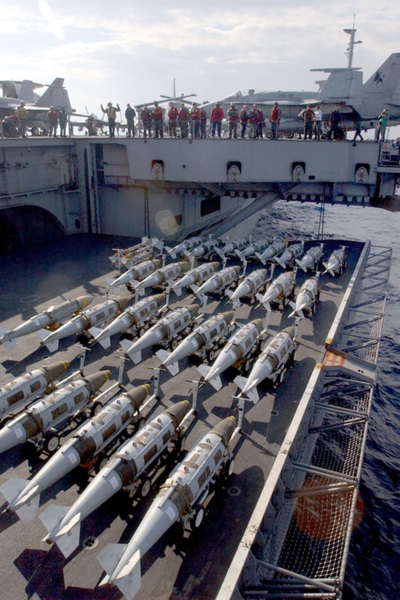
The US Air Force, Navy, and Marine Corps originally planned to acquire a total of over 87,000 JDAM kits from Boeing, with total program cost of over $2 billion USD. By the end of 2013, over 250,000 had been produced, at a cost of a few tens of thousands of dollars per item -- cheap for a weapons system. The success of JDAM in combat led to considerable international interest in the weapon, with several dozen US allies adopting it.
Boeing funded development of a JDAM kit for the Mark 82 lightweight bomb, and the services adopted the weapon, designated "GBU-38/B", finding it useful for attacks in built-up areas where collateral damage had to be minimized. Initial use of the GBU-38/B was in the fall of 2004, during fighting in Iraq. The GBU-38/B has been carried by B-1 and B-2 bombers, with the large numbers of munitions in a load allowing the bombers to hit a long list of targets in a single sortie. A smart stores rack was developed for the B-2, allowing the aircraft to carry 80 such munitions.
The US also developed a guided version of the venerable B61 nuclear bomb -- called a "dial-a-yield" munition, since its explosive yield can be preset from a range before a mission -- with GPS-INS guidance. While specifics of the "B61 Mark 12" are not all that clear, illustrations do show that it was fitted with a JDAM tailkit and strakes, or derivatives of such.
* Boeing worked with Australia's Defence Science & Technology Organisation to develop the "JDAM-ER" -- an "extended range" variant with a Mark 82 bomb and pop-out switchblade wings that tripled the reach of the weapon. It went into in production in Australia, for service with the RAAF. Boeing has, so far, not developed a switchblade kit for heavier bombs. From 2023, the JDAM-ER was supplied to Ukraine to help fight the Russian invaders; it was light enough to be carried by Ukrainian MiG-29s, but may also have been carried by Su-24s.

Boeing also developed an auxiliary laser seeker for the JDAM, with the first drops of the "Laser JDAM (LJDAM)" in 2005. Boeing decided to perform development of the laser seeker with company funds in hopes that the US armed services might be willing to buy the finished product, and in fact the Navy and Air Force quickly snapped up LJDAM. The SAL seeker was very unlike the old Paveway "birdie", instead resembling an 8-ball. It was refitted to existing lightweight JDAMs, with the upgraded munitions being designated "GBU-54", and seeing combat in Iraq in the summer of 2008. The laser JDAM rendered the Paveway series obsolete.
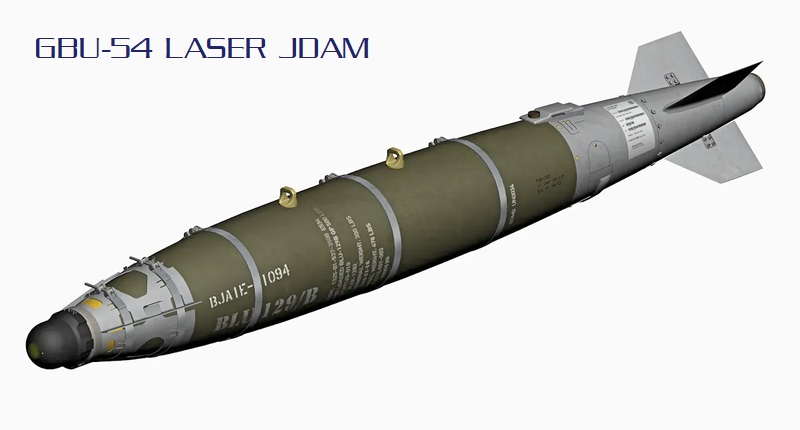
In late 2002, the Air Force also began experiments on attacking moving targets, using JDAMs modified with a datalink to permit course corrections up to weapon impact. There has been further work on this technology, as it provides a relatively cheap option for precision strike. Such a datalink would allow a JDAM-ER to be dropped from a standoff distance and then guided to target by a battlefield surveillance aircraft, or in potential even a space-based surveillance platform.
BACK_TO_TOP* The US military has taken a particular interest in a lightweight GPS-guided bomb, known as the "GBU-39/B Small Diameter Bomb (SDB)", initially known as the "Small Bomb System (SBS)" -- which in turn was a follow-on to a proof-of-concept effort in the 1990s, the "Miniaturized Munitions Technology Demonstration (MMTD)" program.
In 2001, Lockheed Martin and Boeing were selected to develop SDB prototypes, with Boeing winning the production award in 2003. The first "all-up" test of live weapons was in late 2004, with two being dropped by an F-15E and both successfully striking their targets. Low-rate production and operational introduction began in 2006, with the munition in combat in Iraq before the year was out.
The SDB was a penetrating bomb, with a weight of about 110 kilograms (250 pounds), and length of about two meters (6 feet 6 inches). It had the same penetrating capability as a heavyweight penetrating weapon, able to punch through 90 centimeters (3 feet) of reinforced concrete, but only had a load of 17 kilograms (38 pounds) of explosive. The SDB was primarily designed for carriage on new stealthy piloted and unpiloted strike aircraft to allow them to carry weapons internally, while still giving them enough firepower to destroy a number of separate targets in a single sortie. Of course, the SDB could be carried externally, with four SDBs carried on a single multiple ejector rack, replacing a single JDAM; an F-15E Strike Eagle could carry 12 SDBs, all independently targetable. The SDB was also a good store for drones like the General Atomics Reaper.
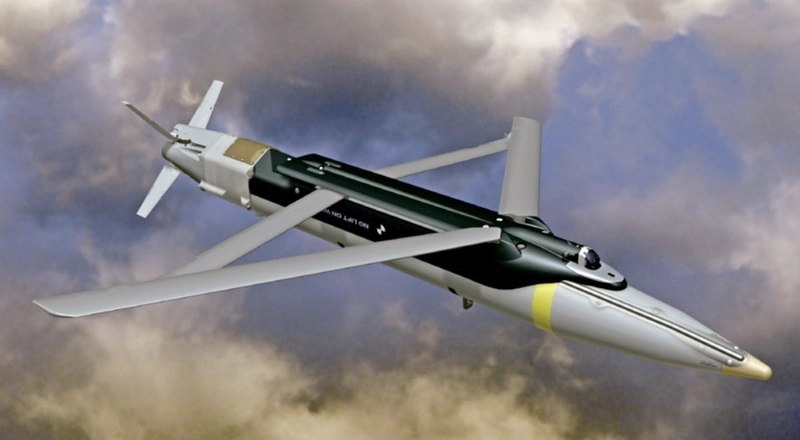
Early on, the SDB was not envisioned as having wings, but a "Diamondback Swing Wing Adapter Kit (SWAK)", with pop-out wings, was incorporated as standard, allowing the weapon to be dropped from stand-off ranges of up to 45 kilometers (28 miles) at altitude. If the SDB was launched at a hard target, the wing would be discarded in midcourse to allow the bomb to build up velocity before striking the target. For soft targets, the wing would be retained until the bomb is in range of small arms fire.
The SDB incorporated a "differential" GPS guidance system to provide a smaller CEP, and an improved penetrating structure. Compact "lattice fins", AKA "grid fins' -- a Russian invention, originally designed for Russian missiles and space launch vehicles, like paddles facing the airstream and with a honeycomb structure to prove a large airfoil area in a compact configuration -- have been considered to assist with internal carriage.
The SDB was fitted with a "Hard Target Smart Fuze (HTSF)" -- a fuze mounted in the tail that incorporated accelerometers and a processor chip. The HSTF could determine if the bomb had struck earth, concrete, rock, or empty space; could count the number of layers it penetrated; and could compute distance or time to determine the appropriate detonation time for a specific target.
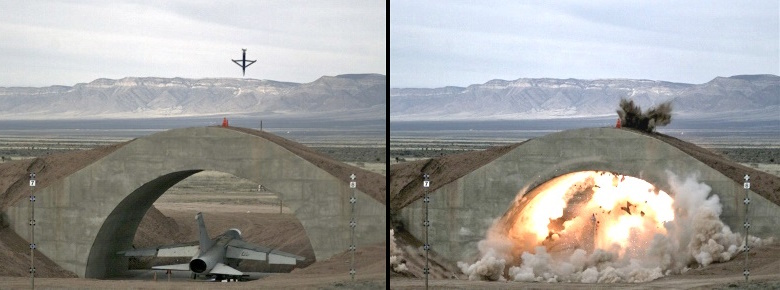
The small size of the SDB was also intended to limit collateral damage to nearby civilian structures. To improve on that, in 2008 Boeing began shipment of a derivative named the "Focused Lethality Munition (FLM)" with a composite case and a new explosive filler to produce blast without fragmentation effects, the concept being to destroy a specific target while minimizing damage to the target's surroundings.
Weapons designers have worked on a "Multiple Event Fuze" that could trigger multiple munitions functions, such as igniting a blast-fragmentation warhead to tear open an installation, followed by a fuel-air charge to incinerate it. They developed a SAL seeker for the SDB as well, this SDB variant going into service with the US Special Operations Command (SOCOM) in 2014; and a seeker that could home in on a GPS jammer, though that seems to have been purely experimental.
* Tens of thousands of SDBs have been produced. The weapon was approved for export to Israel in September 2008, seeing initial combat action against Hamas targets in Gaza at the end of the year. It is being license-built in Italy for use by the AMI, the Italian Air Force; the Royal Australian Air Force ordered a batch in 2016.
Boeing working with SAAB of Sweden to use an M26 rocket booster and an adapter to launch the SDB from a Multiple Launch Rocket System (MLRS) ground vehicle. M26 rockets were originally built with cluster warheads; the US has not agreed to a ban on cluster munitions, but has de-emphasized them, with the M26 cluster munition warheads being decommissioned. That has left a stockpile of rocket motors for other use.
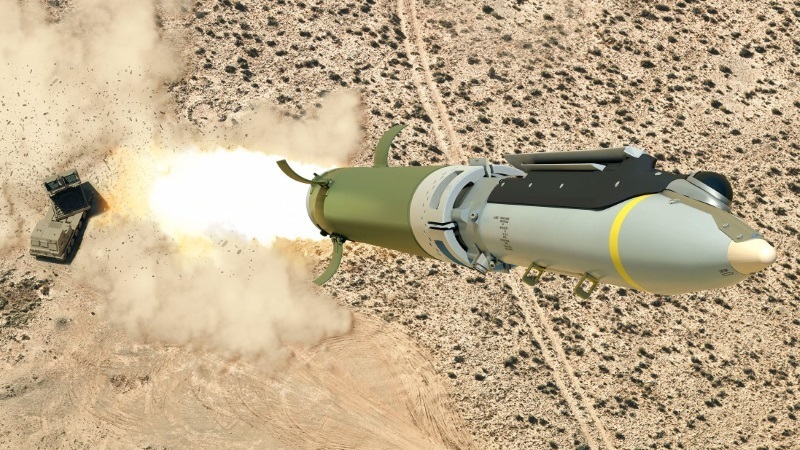
The "Ground-Launched SDB" was clearly an improvisation, but by all appearances a very effective one -- and cheap, given the off-the-shelf availability of its primary elements. Maximum range has been given as 150 kilometers (95 miles); it could maneuver as per a flight program to attack targets from a roundabout direction, if at expense of range. GL-SDBs were trialed in Ukraine in 2023, but proved ineffective due to GPS jamming. The idea was clearly not abandoned, but it had to be rethought -- exactly how is not apparent yet.
As another variation on the SDB, the US Navy decided to leverage off the SDB's glide bomb wing kit to develop a "glide torpedo", designated the "High Altitude Anti-submarine warfare Weapon Capability (HAAWC)". It is intended for the Navy P-8 Poseidon ocean patrol aircraft, based on the Boeing 737 jetliner.

Traditionally, an ocean patrol aircraft had to go to low altitude to drop a homing torpedo -- but descending to low altitude and returning to patrol altitude means expending a lot of fuel, and also increases airframe wear. HAAWC will be released at altitude by a P-8, to glide low to the specified target area using GPS guidance, and drop its Mark 54 homing torpedo. HAAWC performed its first guided tests in 2017, and will be fielded after 2020. It will be offered to other P-8 users, including Britain, Australia, and India.
* As a follow-on to the initial SBD, the Pentagon obtained a smarter "GBU-53/B SDB-2 Stormbreaker", with more properly integrated airframe; GPS-INS midcourse guidance; a multi-function warhead that can destroy either hard or soft targets; and most significantly, a triple-mode smart seeker -- featuring millimeter-wave radar, uncooled infrared imaging, and SAL seeker technology. Although Boeing was favored to win the follow-on contract, Raytheon got the award in 2010, with initial low-rate production in 2015. There has been some thought, if no action yet, of an SDB-2 variant with a small turbojet engine.
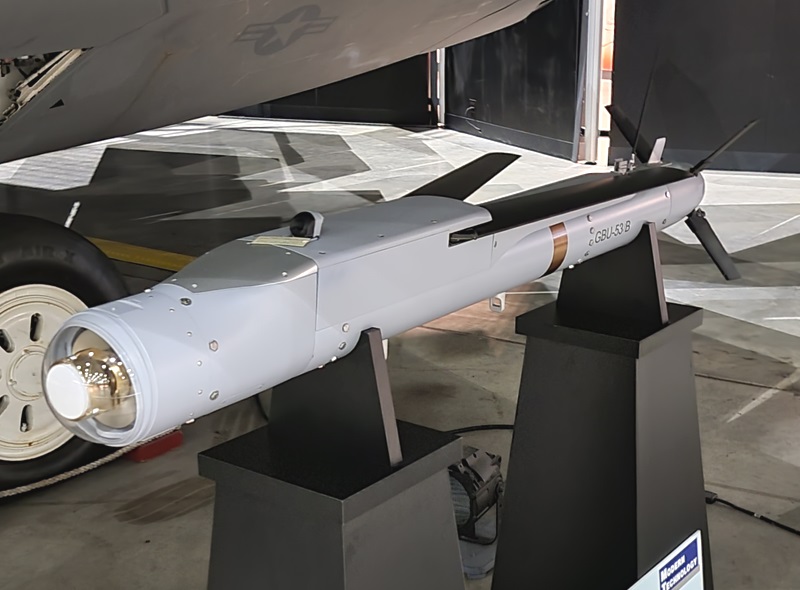
* At the other end of the size scale from SDB was the "GBU-43/B Massive Ordnance Air Blast (MOAB)" GPS-guided bomb, intended for attacking caves and similar hard targets. MOAB was developed by the Air Force Research Laboratory on a crash basis for use in the US invasion of Iraq in the spring of 2003, but it reached field units too late to see any use in that conflict. Concept studies began in April 2002, with development beginning in September, and the first test drop 42 days later.
It was a huge weapon, with a weight of 9.84 tonnes (21,700 pounds), 8.48 tonnes (18,700 pounds) of that being explosive. It had two long stub wings and four pop-out lattice-fin tailfins, and was detonated by twin nose-mounted fuzes. Its GPS-INS guidance, using a GPS receiver on the tail, allowed it to maneuver down narrow Afghan valleys, where cave hideouts were often sited to complicate air attack, to impact directly on a cave entrance. It was not a penetrating weapon; the massive shock wave propagated down a tunnel, causing destruction by sheer overpressure deep inside.
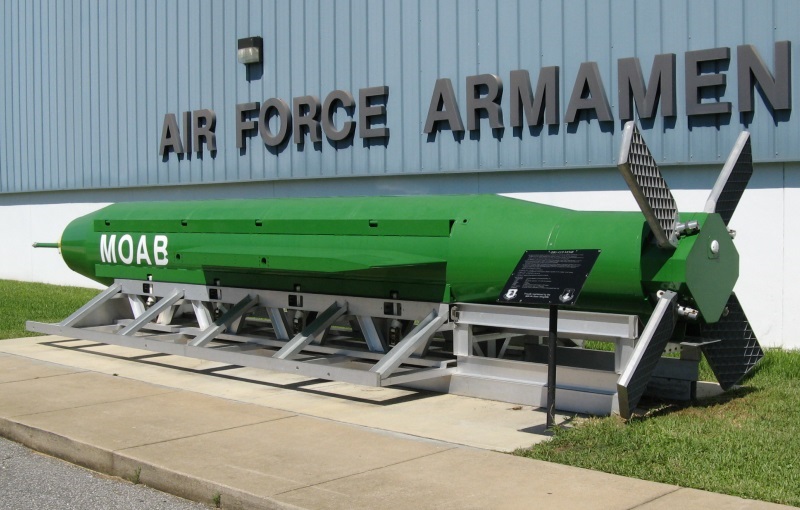
The MOAB acronym has sometimes been said to stand for "Mother Of All Bombs". When the MOAB bomb was announced to the public the town of Moab, Utah, protested against the name, but to no effect. MOAB was intended for drop by a C-130s, with the guided glide capability allowing the drop aircraft to stand off from the target area.
Only a small batch of MOABs was built, the Air Force seeing MOAB as more or less a prototype of a series of munitions. First combat use of MOAB was on 6 April 2017, against a tunnel complex in Afghanistan's Nangahar province. There was some public criticism of use of the munition, with claims that it was grandstanding by the Trump Administration -- but US Central Command insisted that it was used for the job it was designed to do, and would have been used before had there had been a need for it.
Following MOAB, the next member of the family -- the "GBU-57 Massive Ordnance Penetrator (MOP)" -- was developed by Boeing. It was a thick-cased weapon with GPS-INS guidance, stub wings, and lattice tailfins, but with a smaller form-factor for carriage on the B-52 and B-2 bombers. It had a length of 6.35 meters (20 feet 6 inches), a diameter of 80 centimeters (31.5 inches), and a weight of 13.6 tonnes (30,000 pounds), about a sixth of that being explosive filling. When dropped from altitude, it could penetrate 60 meters (200 feet) into the ground and still punch through a reinforced-concrete roof.
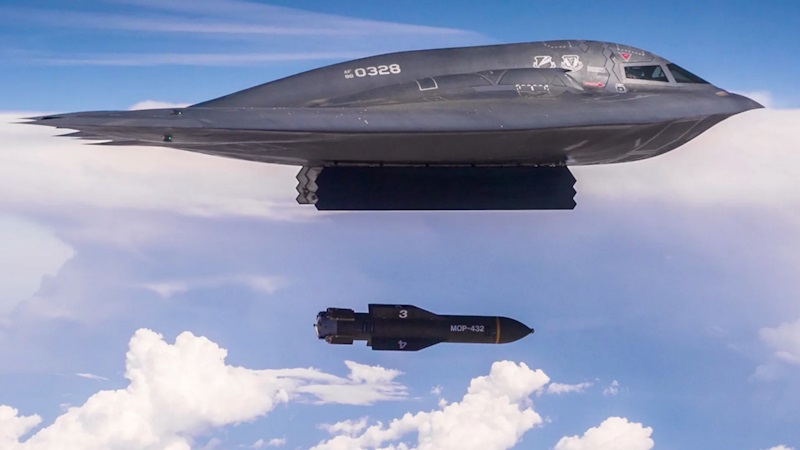
Initial deliveries were in 2012, the program having been accelerated due to worries about Iran's nuclear weapons development program, which is built around a distributed network of underground complexes. There are several variants of the GBU-57, but not much has been revealed about them; some have strakes instead of stub wings, with other differences apparently being updated fuzes and other tweaks. The Air Force has been working on a "Next Generation Penetrator (NGP)" -- only about a third as heavy as the MOP, so it can be carried on smaller aircraft -- but not much has been said about it, either.
BACK_TO_TOP